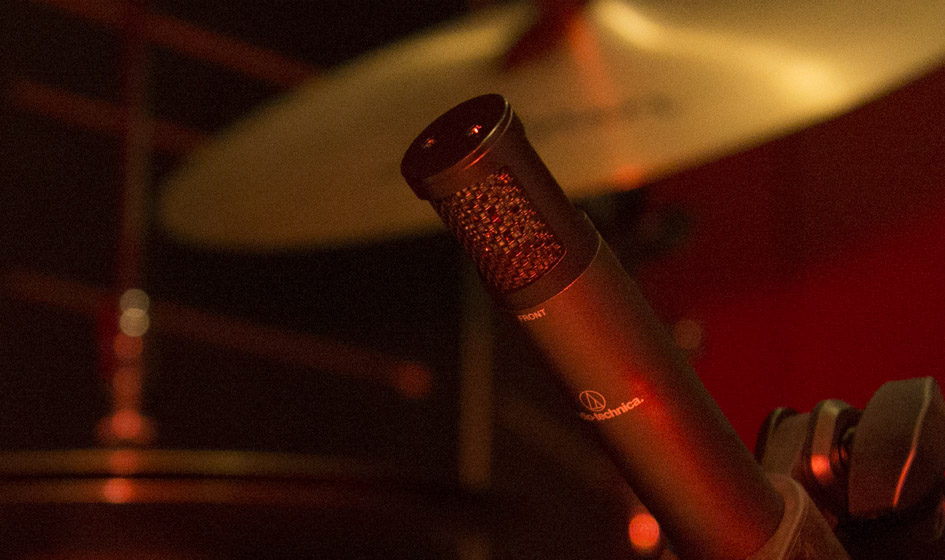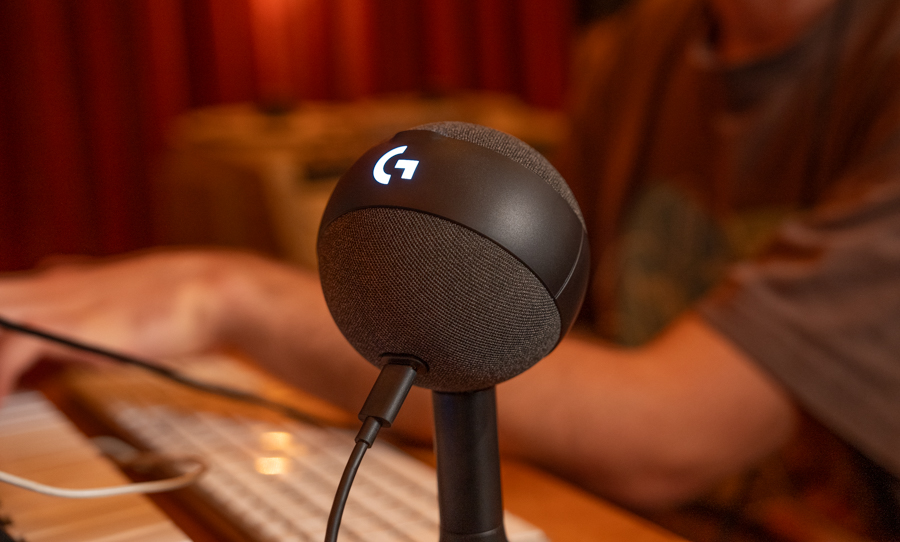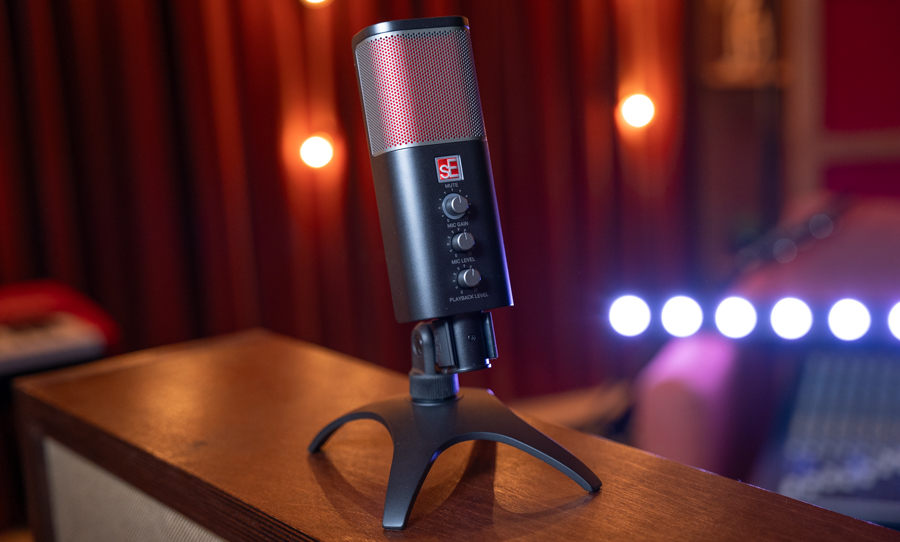Crafting a drum sound that steers away from the traditional can set a mix apart from the rest. Read on as we delve into microphones, processors and strategies for pulling unique drum sounds.
Wrangling the unwieldy acoustic beast that is the drum kit is a significant challenge and therefore, there are plenty of standard well-established techniques for miking it up.
The path to attaining the most natural representation of the kit is one worth exploring, however, if you’re looking for ways to make the kit sound less-than-conventional, there are endless avenues for experimentation. Reaching out for mics that don’t comply with their job description is one way, finding special combinations of said mics is another. Placing the microphones in locations that yield the most extreme results, or processing certain channels in unique ways, can add spice to the whole production. And it’s these kinds of things that get us excited.
So read on as we get off the beaten track to look at some different ways to achieve drum sounds that can set a mix apart.

A Solid Bass
Nailing down a solid kick drum sound is a high priority, as it often forms the core of a satisfying and energetic mix. And while a deliciously thumping kick tone might not be the most unconventional, the path to capturing it in all its glory might lead you in interesting directions.
Knowing what you want from a bass drum is the first step. They’re complex, loud and can be unforgiving in the way that it highlights deficiencies in miking technique. They possess a sharp attack and of course that bottom-end woof that can be difficult to translate through one microphone alone.
So why not try two? Separating the roles of the mics – one to capture the initial transient and one to track the low frequency thump – can be a way to represent the full picture of the drum.
The attack mic is typically placed closer to the beater in order to acquire it’s “click” on the drumhead. Most of the time, it’s best to reach for a dynamic for this task, as it needs to handle a lot of SPL (Sound Pressure Level).
Models like the AKG D112 are specialists in this task, but the ElectroVoice RE20 or the Beyer Dynamic M88 (which are more accustomed to vocals) do a great job of handling a lot of volume without sacrificing high-frequency detail.
Placing another mic further away from the beater will do a better job delivering the crucial bottom end tone. The selection of mics for this role can be more diverse, with the flatter frequency response of condenser microphones often favoured for translating the richness of the low frequencies.
But even a ribbon mic – assuming it’s not too delicate – can do a great job of recording the lush bottom end of the kick drum. Their design means that they are naturally capable of reproducing very low frequencies, so if you need a little more “boom”, don’t discount this option.
The distances from the beater – and the mics in relation to each other – is a matter of taste. Tweaking these positions and directing the mics in different angles, even by a tiny amount, can affect the tone hugely. Phase is also a very important consideration, because the better the phase relationship between the mics, the richer the bottom end will be.
The Backbeat
Moving upward in frequency and equally important in the backbeat is the snare drum. With all its presence and ability to cut through the mix, it forms the central character of the drum sound alongside the kick drum.
The large part of the snare’s sonic identity is captured in the miking of the batter head (though arguably of equal importance is the position of the overhead mics). The trusty Shure SM57 has had this job locked down for decades, owing in large part to its ability to take a lot of punishment and its customary sub-200hZ rolloff, slight top end bump, which lends the snare a lot of punch, while avoiding any low-end rumbles.
Of course, the 57’s proficiency in this task doesn’t mean you shouldn’t consider other candidates. A popular technique involves placing two radically different mics side-by-side in order to develop a more complex picture of the drum. A small diaphragm condenser alongside a dynamic can highlight a little more of the snare’s snappiness in the mix.
It’s quite customary to add another mic to the resonant head of the snare as well. Close-miking the snare wires will further accentuate the snap, adding a layer of crispy skin to the body of the tone.
How to process this tone is a matter of taste, but driving it harder with saturation, slamming it with compression or getting adventurous with reamp chains and fuzz pedals can inject sizzle into the beat and create an almost synthetic tone.
Getting Roomy
An effective way to steer an overall drum sound into uncharted waters is to make use of room mics. The palette of close mics is slightly more restricted in scope, as they need to cope with more volume. Room mics are free from such burdens and so almost anything goes… as long as it sounds good.
Perhaps the most pressing question when it comes to room mics is why? If you’re trying to create the sensation of distance, best to find the furthest possible spot to place the mic (possibly in a different room altogether). If you’re trying to create weird reflections, experiment by placing the mic near hard and reflective surfaces – quite the opposite if you’re going for a wooly, oblique sound.
These kinds of sounds lend themselves to extreme processing too. Slathering the boxy room mic in saturation – a preamp like the Phoenix DRS 8 does this oh so well – can create a distorted 808-like atmosphere.
Smashing It
Smash, bash, trash: all labels describe essentially the same phenomenon, which is placing a microphone in an amongst the different elements of the kit and capturing the ambient sound. There are as many variations to this placement as there are engineers, so the key is to get experimental.
More often than not, it’s going to be mighty loud wherever put it, so it’s probably best to reach for a less sensitive dynamic mic (the sound will definitely not be hi-fi anyway). If you’re looking for a good place to start, try drawing an imaginary triangle between the kick, snare and floor tom, and place it in the middle. The resulting sound should be aggressive, woofy and should reflect the claustrophobia of its position in the kit.
Like the room mic, this will doubtfully be the most realistic representation of the kit. You can go wild with some of the aforementioned excessive processing, but some benefits can be had by blending this hyped, hard-nosed tone with the more traditional sounds of the kit in a mix.
Less is More
How many mics you use on the drum kit will sometimes depend on your channel count, or how many mics you own. But if you had no such limitations, is more always more?
Well, not necessarily. And when you’re setting up mics to capture the full drum sound, it’s important to keep in mind what you really want from the kit and how it will fit into the mix. Some engineers will relish the control of close mics on all drums, with overheads, room mics and more.
Others will prefer to craft an effective drum kit sound from substantially less microphones. Glyn Johns became famous for his method, showing the way to maximum effectiveness with a minimal amount of microphones. But sometimes it doesn’t need to be that extreme.
An example is the difference between mono and stereo overheads. If the stereo image is crucial to the drum sound of the production, go with a stereo pair. But a mono overhead can be a compelling way to achieve a solid spine for the mix, especially if you can get tight phase coherence between the kick, snare and overhead.
Aside from some fundamental considerations of microphone technique (like achieving an accurate translation of the sounds in the live room so they appear lifelike in the control room – the all-important phase coherence, in order to avoid phase cancellation), the key to warping the drum sound to satisfy your curiosity is experimentation.
So venture forth into the world of weird placements and torture your preamps and compressors armed with the knowledge of what kinds of tools will work best for the job. Then, duly ignore all these conventions and make your own way.



